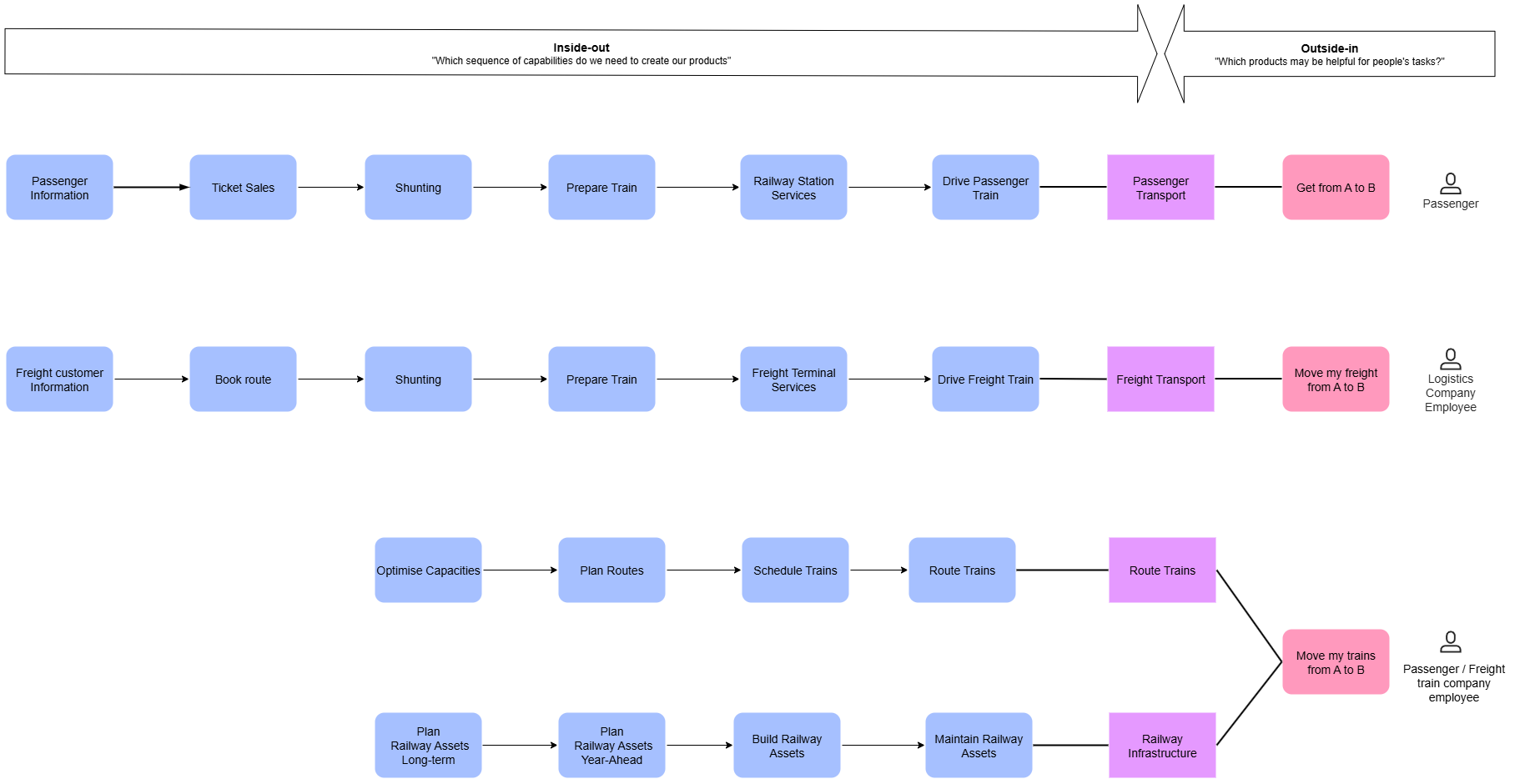No edit summary |
No edit summary |
||
| (One intermediate revision by the same user not shown) | |||
| Line 33: | Line 33: | ||
<br><br> | <br><br> | ||
[[File: CGM_Product_Deligvery_1.png]] | [[File: CGM_Product_Deligvery_1.png]] | ||
<br><br> | |||
{| style="width:100%;" | |||
| style="text-align:left; width:50%;" | [[Capability_Modeling_Guidelines:_Designing_around_Activities_or_Objects|← Previous page]] | |||
| style="text-align:right; width:50%;" | [[Capability_Modeling_Guidelines:_Reused_Capabilities|Next page →]] | |||
|} | |||
Latest revision as of 13:47, 13 September 2025
Capability Modelling Guidelines | How to Structure a Capability Map
Follow the flow to product delivery
The easiest way to identify high-level, operational capabilities is to start with the delivery of major product groups and to work backwards through the flow of their creation activities. Picking product delivery as and 'end point' and stepping backwards through the flow helps to take the focus off the current state allowing for improvement ideas.
Going with the flow as the first step leads to flow-aligned capabilities that together scaffold the basic structure of the processes of the enterprise, and leads to flow-aligned organisations. That way, you optimise your organisation for the efficiency of the core processes.
Practical tips
Focus on product families
Focus on capabilities required to deliver a product family. Doing the same for individual products would make the model too complex.
Connect inside-out with outside-in via the 'product' intersection
Model the sequence of capabilities leading to the delivery of a product group to a defined customer segment from the inside-out. Integrate with (existing) product and experience design if you want to explore how the product may create value for specific users in specific contexts. This enables you to assess perception and capability performance from the outside in.
Connect your Business Process Management with strategy
While Business Process Management initially clarified how processes aligned with IT applications, its use in practice exposed key limitations:
- Documentation over Improvement: Documenting existing processes and automating them often replaced critical evaluation, missing chances for substantial redesign.
- Cumbersome Mapping: Detailed process mapping consumed time and resources, delaying projects and diverting focus from strategic goals.
- Executive Distraction: Senior leaders were drawn into operational details, reducing their capacity for strategic decision-making.
A 'capability first' approach helps to overcome these typical limitations. Using capabilities for scaffolding the basic structure of your process groups helps to keep focus on substantial redesign based on strategic direction.
Example: Intersection Railways
Intersection Railways is a holding corporation. Their biggest company plans, builds and maintains the railway infrastructure and routes the trains across their tracks. Their company 'Intersection Passenger' is responsible for the safe and convenient transport of people, while 'Intersection Cargo' transports freight:

| ← Previous page | Next page → |